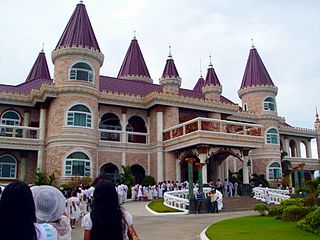 W
WThe history of the Philippines is believed to have begun with the arrival of the first humans using rafts or boats at least 709,000 years ago as suggested by the discovery of Pleistocene stone tools and butchered animal remains associated with hominin activity. Homo luzonensis, a species of archaic humans, was present on the island of Luzon at least 67,000 years ago. The earliest known modern human was from Tabon Cave in Palawan dating about 47,000 years. Negrito groups were the first inhabitants to settle in the prehistoric Philippines. After that, groups of Austronesians later migrated to the islands.
 W
WThe archaeology of the Philippines is the study of past societies in the territory of the modern Republic of the Philippines, an island country in Southeast Asia, through material culture.
 W
WThe historiography of the Philippines includes historical and archival research and writing on the history of the Philippine archipelago including the islands of Luzon, Visayas, and Mindanao.
 W
WThe International Monitoring Team (IMT) is a monitoring team composed of 60 members headquartered in Cotabato City, Mindanao of the Philippines to monitor the implementation of peace between the Government of the Philippines (GPH) and one of the largest rebels in the region, the Moro Islamic Liberation Front (MILF) in the Moro conflict. The team is led by Malaysia, followed by Brunei Darussalam, Indonesia, Japan, Libya, Norway and subsequently the European Union.
 W
WIntramuros is the 0.67-square-kilometer (0.26 sq mi) historic walled area within the city of Manila, the capital of the Philippines. It is administered by the Intramuros Administration with the help of the city government of Manila.
 W
WIslander's Castle is a residence of Governor Glenda Ecleo, of Dinagat Islands. Although not open to the public, the home can be viewed from the gates. The building, also known as the "White Castle", was erected by Glenda Ecleo, widow of Ruben Ecleo, in 2007, reportedly cost P350 million to build, and has been noted as overlooking a vista of shanties and unfinished roads.
 W
WFilipino nationalism refers to the awakening and support of a political identity associated with modern Philippines leading to a wide-ranging campaign for political, social, and economic freedom in the Philippines. This gradually emerged out of various political and armed movements throughout most of the Spanish East Indies—but which has long been fragmented and inconsistent with contemporary definitions of such nationalism—as a consequence of more than three centuries of Spanish rule. These movements are characterized by the upsurge of anti-colonialist sentiments and ideals which peaked in the late 19th century led mostly by the ilustrado or landed, educated elites, whether peninsulares, insulares, or native (Indio). This served as the backbone of the first nationalist revolution in Asia, the Philippine Revolution of 1896. The modern concept would later be fully actualized upon the inception of a Philippine state with its contemporary borders after being granted independence by the United States by the 1946 Treaty of Manila.
 W
WPhilippines and the Spratly Islands – this article discusses the policies, activities and history of the Republic of the Philippines in the Spratly Islands from the Philippine perspective. Non-Philippine viewpoints regarding Philippine occupation of several islands are currently not included in this article.
 W
WTradeware Ceramics in the Philippines are ceramics produced in different countries and traded within the Philippines. They are often referred to as export ware and became popular due to their kaolin-type clay that was difficult to replicate. Tradeware ceramics in the Philippines range from Pre-Spanish arrival through the Post-Colonial period with the Manila Galleon. The leading scholars in this field are Carl E. Guthe, Li Jian'an, Li Min, Olov Janse, and Robert Fox.